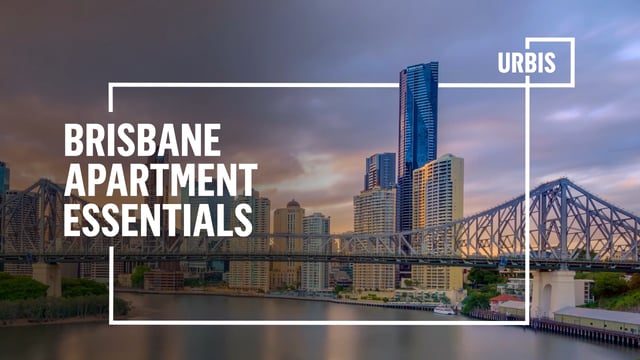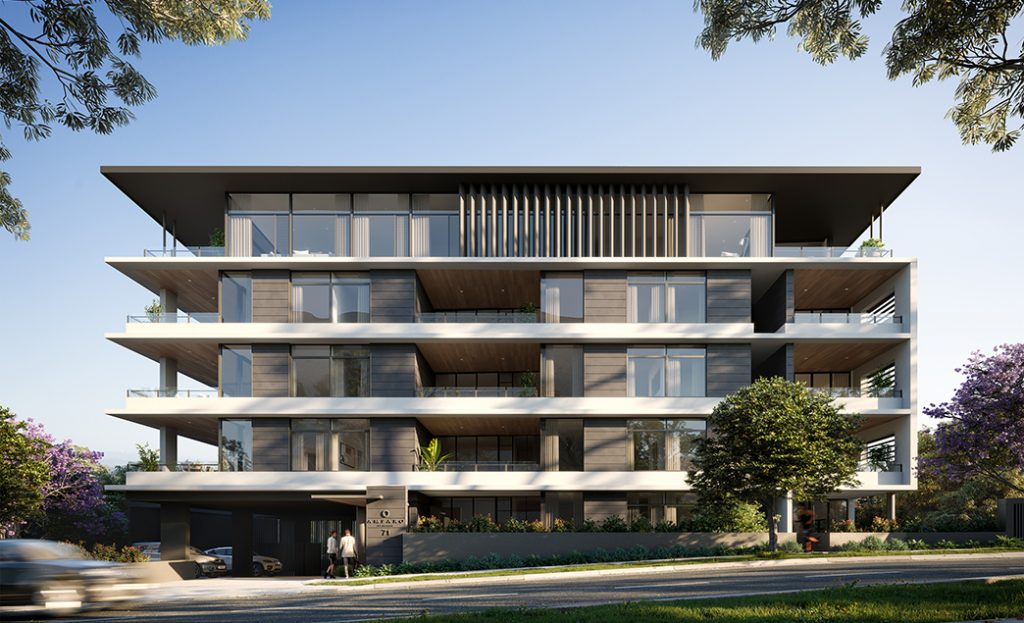Every year, tens of thousands of residential developments are delivered in Queensland and Australia.
Core housing options have been predominantly Homes, Townhouses and Apartments.
In South East Queensland, we have witnessed vast changes over the last few years on the product offered to the market, the absorption of product, and buyer demographic.
This coupled with high land prices and finance issues for both developers and purchases, has significantly impacted the property market.
We have witnessed:
- Apartment Developers diversify into land subdivisions and townhouse developments.
- Builder-Developers creating contracting arms to build for other developers.
- Brisbane developers, cross Brisbane off the list and focus on Gold Coast and Sunshine Coast.
PROPERTY FEED
At the July 2019 Property Feed event sponsored by Urbis, Dan Everett of EVERETT Management hosted a panel discussion to uncover insights on the future of development in South East Queensland with the following speakers.
Paul Riga
Market Analyst & Director at Urbis
Taylor Booysen
Head of Development at Mosaic Property Group
Gavin Hulcombe
Residential Valuer & Director at Herron Todd White
In the following questions, the panel speakers share insights on:
- Market trends and demands
- Residential Valuations
- Off-the plan sales
- And much more
QUESTION 1
To: Paul Riga – Urbis
Urbis recently came out with the Brisbane Apartment Essentials – Quarterly Report. Can you share some of your key findings?
The Urbis Inner Brisbane Apartment Essentials – Quarterly Report is research that looks at off-the-plan sales in the inner Brisbane market. We monitor projects that are approximately 25 apartments + in size. It has been a really telling benchmark over the last 7 years showing trends of the ups and downs that the Brisbane Apartment market has been through. This recent 1st quarter (2019) we registered 123 apartment sales.
To look at this comparatively – looking back in the middle of 2015, we saw around 2500 apartment sales in the same quarter. So significantly down from our peak as far as the off-the-plan market is going. We’re still bumping along the bottom to that extent. A lot of that is triggered by the supply side of things. In the December quarter 2018, we saw zero launches of new apartment projects in the inner Brisbane.
In the most recent quarter that we’re talking about 1st quarter (2019) – only one new apartment project circa 50 – 60 apartments launched into the market.
The last quarter has really been about absorbing the product that is still on the market. The projects that are in pre-sales need to try and achieve a few more of those pre-sales, so it has been a relatively slow market.
When we look at the actual sales, there is a diverse split, we saw a lot in the upper end premium price points, and we also saw a fair bit of that investor market coming back too. Certainly, in the downsizer, owner occupier premium market, we are seeing a lot of transactions.

QUESTION 2
To: Taylor Booysen – Mosaic Property Group
Mosaic Property Group recently posted an article referencing the Urbis Brisbane Apartment Essentials report, noting that Mosaic Property Group has delivered two of Australia’s top 10 sales results for off-the-plan apartment projects. Brook Monahan noted feedback from investors that owner-occupier designed product is delivering a stronger result in terms of appreciation and rental yield. And that Owner-occupiers are dominating your sales.
Can you explain how the product you are offering has changed to meet this demand?
There really is no delineation between the owner-occupier vs investor grade product from our perspective, there is no reason investor style product should be of an inferior quality to the owner-occupier product. At the end of the day, someone is going to live in it and it’s going to be their home.
When Mosaic Property Group was founded, Mosaic made the conscious decision to steer away from what is referred to as “Investor grade product” which from our perspective is often a tag that is given to poorly considered, poorly designed product that doesn’t have a great deal of appeal and is sold at a price point. There have certainly been times in the market where that product has a place, but we simply offer a product that has owner occupier appeal, regardless of whether the buyer happens to be an investor or an occupier. By that we mean larger floor plans, better quality of finish, and well considered architectural outcomes.
Delivering product with an owner occupier appeals allows the emotive reasons people buy property to be tapped into, which will generally result in greater capital growth for our clients in the long-term when the time comes for them to sell. Those features that appeal to an owner occupier when they buy a property, will also be appealing to a renter, or investor. This means that the property also tends to perform better in the short term also, with considerably lower vacancy rates and an average rent achieved for that product which is often higher than competitor product in the suburb.
In saying this, we haven’t had to evolve our product as much as other developers, as we have always been focused on this type of product offering from the get-go. What I would say has happened though is that over the course of the last few years our reputation for delivering quality product has allowed us to now escalate into a higher price point, where we are specifically targeting the higher end owner-occupier market. An example is a couple of $5-6 million penthouse apartments we have sold in Maroochydore on the Sunshine Coast, which broke the suburb record for apartment sales.
We have another high-end offering at Swann Road, Taringa. Those apartments are around $1.2-1.3 million dollars and have been well received by the local market. It would be difficult to go into these markets and be successful without having already created a reputation in the market for delivering a quality product.

Amparo – Taringa – Mosaic Property Group
16 Apartments
QUESTION 3
To: Gavin Hulcombe – Herron Todd White
Where are you seeing Off-the-plan sales transact atm?
Can you share some of your key findings regarding Brisbane Off-the-plan Apartment Sales and their Valuations?
Sales volumes have come off since 2014 – 2015 and early part of 2016. Particularly off the plan sales. If you look at the proportion of buyers – there is a relatively high proportion of those buyers that are coming from interstate or international and the local buyers is a very small proportion. Overall, we have seen interstate and international buyers pull back significantly – probably less than 10% of what was transacted in 2014 – 2016.
What we are starting to see, is peak delivery in the last quarter of 2017 and first quarter of 2018, which is over 12 months ago now. We are still seeing a lot of that old balance stock in a number of those buildings. And we are seeing motivated developers trying to clear some of their old stock.
QUESTION 4
To: Paul Riga – Urbis
In Brisbane, what residential product do you believe is in demand now?
From what we have seen in the Apartment Essentials Report, the product in demand is based around either quality investor product or value-driven owner occupier product. Generally purchasers are those who have finance and equity sorted, so sales are being dominated by the downsizers and owner occupiers.
The First home buyer market is tough, although APRA recently announcement there is some potential relief on the horizon, but certainly this hasn’t resulted into anything on the ground when we talk to developers. Enquiries are picking up across the board, but again there is that problem of obtaining finance that has stopped a big chunk of the market from transacting.
Developers have to be aware of the buyer capacity of their target market. It is integral to align a first home buyers deposit and serviceability with forecasted gross realisation of product upon completion of construction. At the same time, it is important to understand what a downsizer limit will be based on house values, time to sell etc.
QUESTION 5
To: Taylor Booysen – Mosaic Property Group
It’s difficult to take a board brush approach in saying what’s happening in Brisbane, Gold Coast, and Sunshine Coast. There are always micro markets within any market. We are always very selective in which area, within a region, we are going into and defining what our point of difference is going to be, and I think that is really the key to our sales success.
Gold Coast – While we had been studying the Gold Coast market for quite some time, it took us a little longer to acquire our first built-form site there than some of the other of developers who currently have projects in the region. We knew that we had to find a site that would allow us to differentiate ourselves from the competition, which did take us a little while, as we were very specific about the location. Our first built-form development in the region is located in the suburb of Mermaid Beach, which was chosen specifically because there is only a very small portion of the suburb zoned for development of any real scale, and it also has some of the most expensive beach-front realty in Australia. So straight away our point of difference was that we were in a blue-chip suburb, with very limited supply. The site also has protected views in a southerly direction down to Coolangatta, as the rest of the suburb which is only zoned for a maximum of 3 storeys of development.
As Paul mentioned, In terms of Brisbane, there hasn’t been a whole lot of product that has been introduced to the Brisbane market place over the last two years, due to all the talk of oversupply. There certainly were areas of Brisbane that had some oversupply and Mosaic specifically chose to avoid many of those areas, but a lot of the product delivered was the ‘investor grade’ stock we mentioned earlier, with the owner-occupier market having been somewhat neglected. So yes, we have been finding success in the Brisbane market and that is because our point of difference is that we are offering quality product. We have well-appointed apartments, common area that people actually want to spend time in, highly architectural buildings, blue-chip locations with great access to the CBD and spectacular views available from many of the apartments. Yes, there has been some stock come into the Brisbane market over the last few years, but the majority of that has been soaked up and we are now finding that the market is hungry for well finished apartments in quality areas.
It is the same with the Sunshine Coast. We understand the market and what our point of difference is going to be in that area, which is what has led to our success there also.
I would say Brisbane, Gold Coast and Sunshine Coast have all been good markets for us, but I think it comes down to the individual projects and what they can offer the buyers that the rest of the market cannot.
QUESTION 6
To: Gavin Hulcombe – Herron Todd White
What are the top key items you look for in a Residential Development ‘As-if complete’ Valuation?
What are some pointers you can give to developers when presenting a project for a Valuation?
It’s about knowing your market at the end of the day. Do your research to get an understanding of what the end buyer wants. The owner occupier market is very assertive – they know what they want. They analyse the plan, they analyse the specifications, they know exactly how it is going to work and the developers that are successful, providing their product meet these requirements.
In the years of late, we have seen apartments that have been poorly designed, poorly built, and have been on the market for a substantial amount of time. Whereas, if you look at the apartments that have been well thought of, the length of time on market is significantly less.
Good Project, good location, good finish, well presented projects will sell, as opposed to the pretty cheap and nasty developments out there.
If we are valuing a project, we really want to understand and see evidenced who the project is targeted to.
QUESTION 7
To: Paul, Taylor and Gavin
What areas in SEQ should apartment developers be considering for their next development?
And what is the buyer profile developers should be positioning to?
Paul – When we’re looking at the gaps in the market in SEQ, each city has a different market (Gold Coast, Brisbane, Sunshine Coast). Its about assessing every market for itself. Make sure you are aligning location and precinct (surrounding amenity) to the development vision.
Moving forward, there is a big potential for the owner occupier market – but not just downsizers. I see an opportunity to continue delivering true owner-occupier product to locations across the Inner Brisbane, particularly as the current intake of renters in these precincts begin to make purchase decisions.
Taylor – There is a large price gap between SEQ and some of the Southern markets, I think a lot of people are aware of this and we believe SEQ is over-due to have some strong capital growth. However, this phenomime has existed for a little while now.
Where we are gaining a lot of confidence from though, is the amount of money going into large infrastructure projects in SEQ. You only need to take a look at projects such as Queens Wharf, Cross-River Rail and the BNE Airport extension for example, to realise that they are going to be game changes for the SEQ market, creating a lot more jobs and investment opportunities. Investors and owner occupiers alike generally flock places that have job opportunities, which is what creates an increased demand for property in the area and drives prices upwards.
As far as areas where developers should be targeting, its anywhere with sound fundamentals where you can find a point of difference to separate from the crowd. Making sure you know who your buyers are and what they want is also key, along with confirming you can deliver a product that is going to meet their demands. Finally, it’s also imperative to deliver on the promise.
Gavin – Previously we have seen not many families looking towards units, but recently we’re seeing a lot more families looking for units.
In 2016 – 2017 you would read about this massive oversupply in the inner city Brisbane unit market, and there were just units everywhere and yet, you talk to people who have just relocated from Sydney / Melbourne, we’re looking for a new 2 bedroom unit in Newstead, or a 3 bedroom unit in New Farm, and we can’t find anything – so I think that was a pretty good example, the fact that we produced a lot of module, generic apartments and yet there was another sector of the market that wasn’t catered for.
Some 3 to 4 and 6 to 8 pack townhouse developments in the infill areas and traditional character areas are still popular because they’re new and modern.
Article written by, Director of EVERETT Management – Dan Everett
For information on upcoming events please contact www.propertyfeed.com.au





